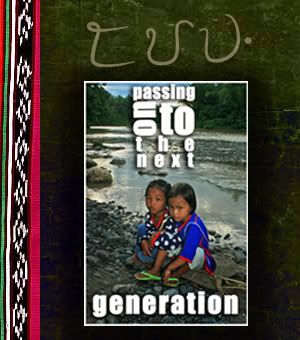Outreach and Mall performances of Dayaw delegates
Rain showers may have poured, performance area may have been slippery, still the invasion of culture through the outreach performance of Dayaw 2011 in Abreeza Ayala Mall in Davao City continued.
Curious glances were cast by by-standers and passers-by wondering what could happen and why different colorful costumes filled their eyes. Finally when the Waray Cluster of Leyte announced in their language the arrival of the newly-wed couple, satisfaction began to seep in their soul.
Dressed in typical wedding gown and barong tagalong, the couple danced to their glee until the elderly parents arrived performing the Curacha with the exhibition of turns you would thought they would never be capable of. The father had even demonstrated a roll on the floor to the pleasure of the audience.
Here came the spectators giving their share of bills on the blue piece of cloth at the center of stage compelled by the invitation of the narrator. That’s how festive Waray weddings are. In fact, in bigger celebrations fireworks could be part of the show.
Curacha has been a major fund-raising activity in Leyte. “Politicians are forced to learn the dance because most likely they would be invited to fiestas and their dance performance becomes a boost to their political image,” related Rutchel Mandreza of the Waray Cluster.
The Cuyunin Cluster of Northern Palawan was never left out in the scene with their dance interpretation of the song “Mareng” in tune to the mastered plucking of the banjo and guitar whose message was a story about how a man survived a boat accident.
What was eye-catching with the Tausug of Sulu were the pointed curved end of fingers called “janggay” which shows the fluid movement of fingers demonstrated in the dance of the princess entitled “dayang dayang.”
The dance “Pangalay” accompanied by the soft melody from the “gabbang” which resembles a xylophone and the biyola (violin) has shown the lightning movement of the female’s fingers as she tried to get away as the male tried to swiftly grab the fingers.
With fuschia, golden yellow and silver as the color of “batawi” (blouse) and the well-tailored and embroidered “habol tiyahian,” “sawal” and “turban, you could almost see royalty of the south.
A different royalty of culture was shown by the Kalinga tribe. Oblivious of the crowd reactions, the male performers majestically wore their G-string (ba-ag) as authentic costume as they danced the “tadek”. But it was not just a costume. Every color and ornament has its meaning. White designs represent the rice granary of the Cordillera Province, green means the mountainous terrains, yellow is for the unexplored gold deposits and rivers and red is for the bravery and courage as they were popularly known as the head-hunters.
Tattoos were visible in the male’s body but it was not just an ornament. It is a status symbol. It is a precedence to have done something heroic like defending one’s tribe or accomplishing something extraordinary before one can have tattoo.
Known as the “peacock of the north”, the male dancers performed the bird dance which was accentuated by the movement of the headdress with feathers originally used to contain the tribe’s valuables like the tobacco since bags were not predominantly used.
Amazing is the right word to describe the pot dance. Developing the skill of carrying these pots is not an easy task. Originally used to carry water, the pots are carried by women passing through mountainous terrains and rice fields with bumpers. It was breath-taking how these women balanced the pots.
Salidsid, a courtship dance was finally performed with the female trying to get away from the male. It was a common theme among the performances. From Curacha of Waray, Pangalay of Tausug and Salidsid of Kalinga, the typical Filipina women always shy away from the male but still eventually giving in. Diverse may be the language, costume and culture but still a common thread runs through every tribe’s veins. The thread that keeps every Filipino together. text and photos by Harley Aglosolos








Walang komento:
Mag-post ng isang Komento